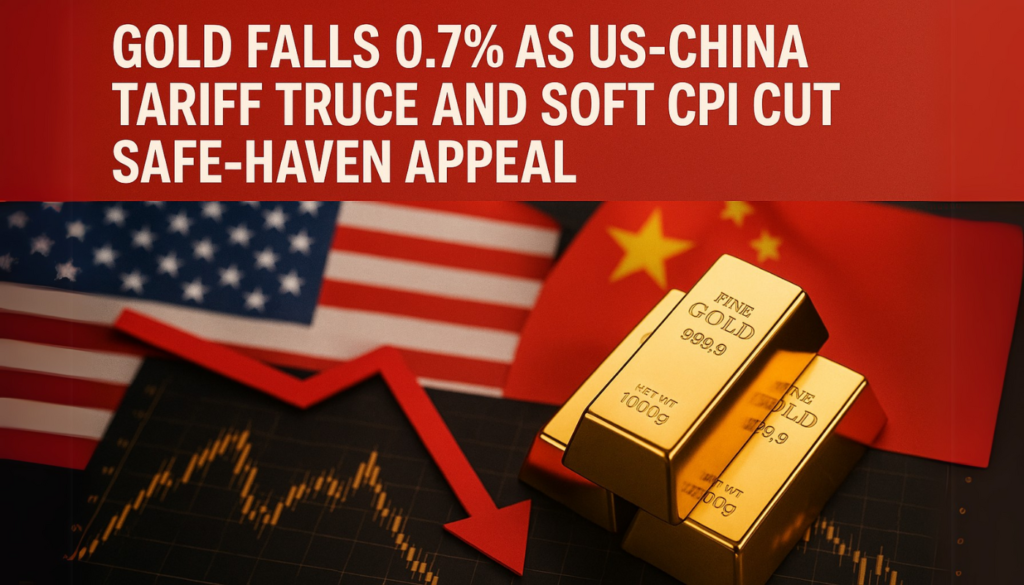Gold prices slid in Asian markets Wednesday, with spot gold falling 0.7% to $3,228.95 per ounce. June futures also dipped, down 0.5% to $3,232.24 per ounce. The decline follows easing geopolitical tensions and weaker U.S. inflation data, both of which dampened demand for the traditional safe-haven asset.
Traders responded to a temporary de-escalation in the U.S.-China trade conflict, which saw both countries agree to lower tariffs for a 90-day period. The U.S. halved its 30% tariffs, and China reciprocated with a 10% cut. This development soothed fears of a global slowdown, increasing risk appetite and driving capital away from gold.
In parallel, Tuesday’s U.S. Consumer Price Index (CPI) report showed inflation cooling more than expected, undermining the urgency for investors to hedge with gold. Gold typically attracts buyers during periods of high inflation due to its value-retention properties. A subdued CPI suggests a reduced need for such protection.
Softer CPI Data Impacts Rate Outlook
The CPI data also plays a key role in shaping expectations around U.S. Federal Reserve policy. Lower inflation potentially gives the Fed more leeway to hold interest rates steady or cut them, both of which could support gold prices. However, market uncertainty about long-term inflationary pressures and the Fed’s next move has kept bullion under pressure.
President Joe Biden signaled the possibility of direct engagement with Chinese President Xi Jinping to finalize a broader trade deal. While diplomatic progress has been welcomed by markets, it also raises questions about long-term monetary policy adjustments.
The U.S. Dollar Index, which often moves inversely to gold, remained largely flat during Asian trading. A stronger dollar typically makes gold more expensive for overseas buyers, further pressuring demand.
Key Market Moves in Metals
Beyond gold, other metals also saw modest shifts:
- Silver Futures fell 0.6% to $32.915 per ounce
- Copper Futures (LME) rose 0.2% to $9,623.65 per ton
- Copper Futures (July) inched up 0.1% to $4.7125 per pound
Copper prices were buoyed by optimism that the trade thaw might improve demand from China, the world’s largest copper consumer. Still, market participants remained cautious ahead of Thursday’s U.S. Producer Price Index (PPI) report, which could signal broader inflationary trends.


